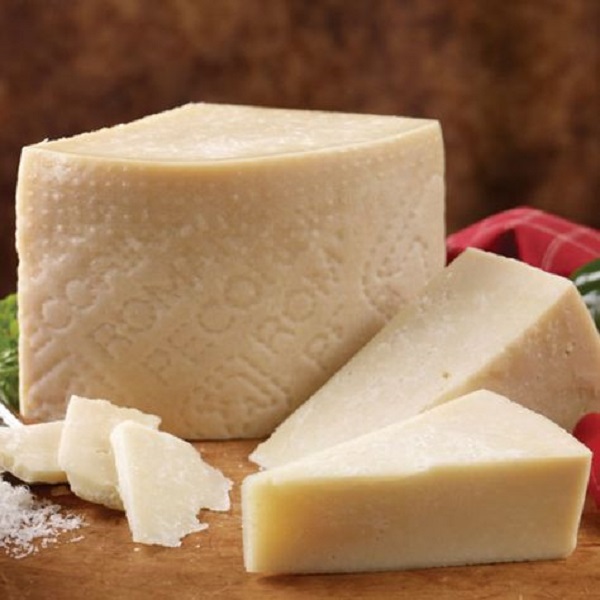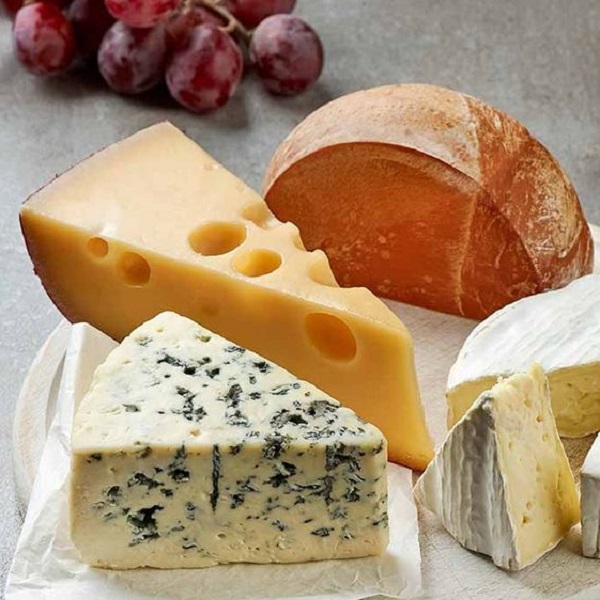Cheese, with its rich flavors and creamy textures, is a beloved food enjoyed worldwide. Yet, its reputation as a high-fat, high-calorie indulgence often leaves health-conscious individuals wondering: Is there such a thing as healthy cheese? Fortunately, the answer is a resounding yes. With a plethora of varieties available, certain cheeses stand out as healthier choices than others. Let’s explore these nutritious options and discover how to incorporate them into a balanced diet.
Understanding the Nutritional Profile of Cheese
Before delving into specific healthy cheese varieties, let’s first grasp the general nutritional landscape of cheese. Cheese is a good source of several essential nutrients, including:
- Calcium: Vital for strong bones and teeth, muscle function, and nerve transmission.
- Protein: Crucial for building and repairing tissues, producing enzymes and hormones, and supporting immune function.
- Vitamin B12: Essential for red blood cell formation, neurological function, and DNA synthesis.
- Vitamin A: Important for vision, immune function, and cell growth.
- Zinc: Necessary for immune function, wound healing, and cell growth.
- Riboflavin: Plays a role in energy production and healthy skin and vision.
However, cheese can also be high in saturated fat and sodium. Therefore, choosing the right type and consuming it in moderation is key to reaping its health benefits without compromising your overall dietary goals.
Healthy Cheese Varieties: The Cream of the Crop
Now that we understand the nutritional components of cheese, let’s highlight some of the healthiest varieties available:
1. Mozzarella
Mozzarella, particularly the part-skim variety, is a shining star in the healthy cheese category. It boasts a lower fat and calorie content compared to many other cheeses while still providing a good amount of protein and calcium. Its mild flavor and smooth texture make it a versatile ingredient in various dishes, from salads and sandwiches to pizzas and pasta.
2. Cottage Cheese
Cottage cheese is another excellent choice for health-conscious individuals. It’s low in fat and calories yet packed with protein, making it an ideal option for those aiming to build or maintain muscle mass. Additionally, cottage cheese is a good source of B vitamins, which are crucial for energy production and overall well-being.
3. Ricotta Cheese
Ricotta cheese, similar to cottage cheese, offers a low-fat, high-protein profile. It’s also a good source of calcium and phosphorus, essential minerals for bone health. Its creamy texture and slightly sweet flavor make it a delicious addition to both sweet and savory dishes.
4. Parmesan Cheese
While Parmesan cheese is higher in fat and sodium than some other options, it’s incredibly flavorful, meaning a little goes a long way. Its intense taste allows you to use smaller amounts, reducing overall fat and sodium intake. Moreover, Parmesan is a good source of calcium and protein, making it a worthy addition to your healthy cheese list.
5. Swiss Cheese
Swiss cheese, known for its distinctive holes, is a good source of calcium, protein, and vitamin B12. Its lower sodium content compared to some other cheeses makes it a heart-healthy option. Its nutty flavor and firm texture make it a delightful addition to sandwiches, salads, and cheese platters.
6. Cheddar Cheese
While cheddar cheese is generally higher in fat and calories, opting for a reduced-fat or sharp cheddar variety can be a healthier choice. Sharp cheddar, with its intense flavor, allows you to use less, thereby reducing overall fat intake. Plus, cheddar is a good source of calcium and protein.

Tips for Incorporating Healthy Cheese into Your Diet
Now that you’re acquainted with some of the healthiest cheese options, let’s explore how to seamlessly incorporate them into your daily meals:
- Salads: Sprinkle crumbled feta or goat cheese on your salads for a flavor and protein boost.
- Sandwiches: Opt for low-fat mozzarella or Swiss cheese on your sandwiches instead of processed cheese slices.
- Snacks: Pair cottage cheese with fruit or vegetables for a satisfying and nutritious snack.
- Pasta Dishes: Use ricotta cheese in lasagna or other pasta dishes for a creamy texture and added protein.
- Omelets and Frittatas: Add shredded cheddar or Swiss cheese to your omelets and frittatas for a flavorful and protein-rich breakfast or brunch.
- Cheese Platters: Create a healthy cheese platter featuring a variety of low-fat and flavorful cheeses like mozzarella, ricotta, Parmesan, and Swiss.
Moderation and Mindful Consumption
While certain cheeses are undeniably healthier than others, it’s important to remember that moderation is key. Even the healthiest cheeses can contribute to excess calorie and fat intake if consumed excessively.
- Portion Control: Be mindful of portion sizes when enjoying cheese. A serving size is typically 1-2 ounces, about the size of a pair of dice.
- Read Labels: Pay attention to nutrition labels when choosing cheese. Compare fat, sodium, and calorie content to make informed decisions.
- Balance with Other Foods: Pair cheese with fruits, vegetables, and whole grains to create a balanced and nutritious meal.
- Listen to Your Body: Pay attention to your body’s hunger and fullness cues. Eat when you’re truly hungry and stop when you’re satisfied.
The notion that cheese is unhealthy is simply a misconception. By choosing the right varieties and consuming them in moderation, you can enjoy the delicious flavors and textures of cheese while still prioritizing your health and well-being. Remember, a balanced diet is all about making informed choices and enjoying a variety of foods in moderation. So go ahead and savor those healthy cheese options, knowing that you’re nourishing your body with essential nutrients and delectable flavors.

Delving Deeper: Cheese and Specific Dietary Needs
Certain dietary needs or restrictions may influence your cheese choices. Let’s explore some specific scenarios:
Lactose Intolerance
If you’re lactose intolerant, you might worry about consuming cheese. However, some cheeses are naturally lower in lactose, making them more tolerable for those with sensitivities. Aged cheeses like Parmesan, Swiss, and cheddar tend to have lower lactose levels due to the breakdown of lactose during the aging process. Additionally, goat cheese and sheep’s milk cheeses like feta often contain less lactose than cow’s milk cheeses.
Veganism
For those following a vegan lifestyle, plant-based cheese alternatives are readily available. These alternatives are typically made from nuts, soy, or other plant-based ingredients and can provide a similar flavor and texture to traditional cheese. However, it’s essential to read labels carefully, as some vegan cheeses may be high in sodium or processed ingredients.
The Art of Cheese Pairing: Enhancing Flavors and Nutrition
Pairing cheese with other foods can elevate both the taste and nutritional value of your meal. Consider these pairings for a delightful culinary experience:
- Fruits and Cheese: The natural sweetness of fruits complements the savory notes of cheese. Pair apples with cheddar, grapes with brie, or figs with goat cheese for a delightful combination.
- Cheese and Nuts: The crunchy texture and healthy fats of nuts pair wonderfully with cheese. Try almonds with Parmesan, walnuts with blue cheese, or pecans with Gouda.
- Cheese and Whole-grain Crackers: Whole-grain crackers provide fiber and complex carbohydrates, creating a balanced snack when paired with cheese. Choose low-fat or whole-wheat crackers to further enhance the nutritional value.
- Cheese and Wine: The art of cheese and wine pairing is a timeless tradition. Experiment with different combinations to discover your favorite pairings. For instance, pair a sharp cheddar with a Cabernet Sauvignon or a creamy brie with a Chardonnay.

The Joy of Cheese: A Culinary Delight and Nutritional Powerhouse
Cheese, beyond its delicious taste and versatility, can truly be a part of a healthy lifestyle. By selecting the right varieties, practicing moderation, and pairing it with nutritious foods, you can savor the many benefits cheese offers. Remember, the key is to make informed choices and enjoy a diverse range of foods for optimal health and well-being. So go ahead, indulge in those healthy cheese options, knowing that you’re not only tantalizing your taste buds but also nourishing your body with essential nutrients.
In conclusion, the world of cheese is vast and varied, offering a plethora of healthy options for every palate and dietary need. Embrace the versatility of cheese, experiment with different flavors and pairings, and relish in its culinary and nutritional delights.
Remember, a healthy diet is not about deprivation but rather about making mindful choices and savoring the foods you love. So let cheese be a part of your journey towards a healthier and happier you!
